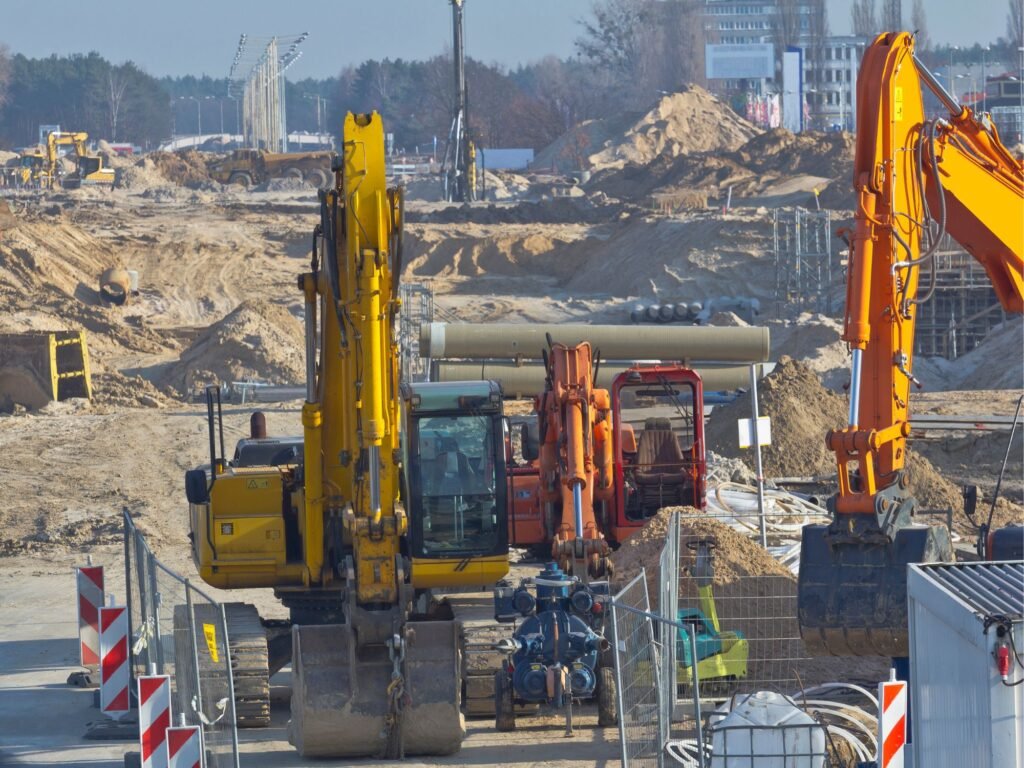Construction, once reliant on manual labour, has undergone a remarkable metamorphosis with the advent of power tools. These technological marvels have become the backbone of modern construction, exponentially enhancing efficiency, precision, and safety. In this comprehensive exploration, we delve into the historical evolution, impact on efficiency, various types, advantages, challenges, safety measures, technological advancements, cost-benefit analysis, environmental considerations, training requirements, case studies, future trends, and user testimonials regarding power tools in construction.
Historical Evolution
The journey of power tools in construction is a tale of innovation and progress. In the early 20th century, manual labour dominated the construction landscape. However, with advancements in technology, power tools have emerged to streamline processes. For instance, the transition from hand saws to electric-powered circular saws marked a pivotal moment, allowing for more precise cuts and significantly reducing labour hours.

DeWALT DCS7485B FLEXVOLT 60-Volt 8-1/4-Inch Adjustable Table Saw – Bare Tool

DEWALT DWS715 12 Single Bevel Compound Miter Saw

DeWalt 115-DWM120 Heavy Duty Variable Speed Deep Cut Portable Band Saw
Impact on Efficiency
The integration of power tools has catalysed a paradigm shift in construction efficiency. Consider a scenario where a traditional hammer and nails were used for framing; now, with nail guns and power drills, the same task is accomplished in a fraction of the time. This not only accelerates project timelines but also allows for greater attention to detail, ultimately elevating the overall quality of construction projects.
Types of Power Tools
The toolbox of a modern construction professional is diverse, featuring an array of power tools designed for specific tasks. Take, for example, the evolution of concrete mixers. From manual mixing to the introduction of electric and gas-powered mixers, the efficiency gains are evident. Specialised tools like jackhammers and rotary hammers further exemplify the versatility and precision offered by power tools in various construction phases.
Advantages of Power Tools
The advantages of power tools are manifold, impacting every facet of construction. Let’s delve into specific instances. The adoption of laser levels, for instance, revolutionised the accuracy of measurements during layout and foundation work. This ensures that structures are built on solid foundations, minimising the risk of structural issues down the line. Additionally, power tools like pneumatic nail guns not only speed up the framing process but also ensure consistent nail depth, enhancing the structural integrity of the finished product.

DEKO Mini Circular Saw Power Tools with Laser, 4 Blades, Dust passage, Allen key, Auxiliary handle, BMC BOX Electric Saw

J1G-ZP-190 7-Inch Woodworking Chainsaw with Extended Rail 220V Multi-function Miter Saw Bevel 45 Degree 1500W

Xiaomi Torque Adjustment Straight-Handle Electric Screwdriver

DeWALT DCS7485B FLEXVOLT 60-Volt 8-1/4-Inch Adjustable Table Saw – Bare Tool

DEWALT DWS715 12 Single Bevel Compound Miter Saw

SHALL 222-Piece Cordless Drill Set, 12V Electric Drill Sets Combo Kit with Pink Tool Bag for Women
Challenges in Implementing Power Tools
Despite the undeniable benefits, the implementation of power tools in construction comes with its own set of challenges. Resistance to change within the workforce is one such hurdle. Traditional methods may be deeply ingrained, and convincing seasoned professionals to adapt to new tools can be met with reluctance. Moreover, the initial investment in acquiring power tools can be significant, posing financial challenges for smaller construction firms.
Safety Measures
The integration of power tools necessitates a heightened emphasis on safety. Take the example of table saws, a commonly used power tool. While they enhance precision and efficiency in cutting wood, the risk of accidents is heightened. Implementing safety measures such as blade guards, push sticks, and proper training significantly mitigates these risks, ensuring a secure working environment for construction professionals.
Latest Technological Advancements
As technology continues to evolve, power tools are becoming smarter and more connected. Take the emergence of augmented reality (AR) glasses designed for construction workers. These innovative tools overlay digital information onto the physical environment, providing real-time data and instructions. This not only enhances precision but also contributes to streamlined project management.
Cost-Benefit Analysis
While the upfront costs of acquiring power tools can be intimidating, a comprehensive cost-benefit analysis reveals a compelling long-term investment. Take into account the time you will save by using power tools in excavation. Excavators equipped with advanced hydraulic systems can efficiently dig and move soil, reducing labour hours and project duration. The long-term savings in labour costs and increased project turnover far outweigh the initial capital expenditure.
Environmental Impact
In an era where sustainability is paramount, power tools play a role in reducing the environmental footprint of construction projects. Modern construction equipment, such as electric-powered excavators and compactors, produces fewer emissions compared to their traditional counterparts. This shift towards eco-friendly practices aligns with the growing awareness of environmental responsibility in the construction industry.
Training and Skill Requirements
The introduction of power tools necessitates a workforce with the skills to operate these advanced machines. For instance, the transition from manual welding to using power tools like plasma cutters requires specialised training. Investing in comprehensive training programmes ensures that construction professionals can harness the full potential of power tools, maximising efficiency while minimising the risk of accidents.
Case Studies
Examining real-world case studies provides concrete evidence of the transformative impact of power tools. Take the example of a mid-sized construction firm that embraced robotic bricklayers. The use of robotic arms significantly expedited the bricklaying process, allowing the firm to take on larger projects and outperform competitors in terms of project completion time and cost-effectiveness.
Future Trends
The future of power tools in construction holds exciting possibilities. Imagine construction sites where autonomous drones equipped with advanced sensors perform site surveys and inspections. This level of automation not only reduces human labour but also enhances data accuracy, contributing to more informed decision-making throughout the construction process.
User Testimonials
Feedback from construction professionals paints a vivid picture of the positive impact of power tools on their work. A seasoned carpenter attests to the precision of cordless electric drills, allowing for intricate woodworking without the constraints of cords. A project manager highlights how the integration of construction management software with power tools streamlined communication and project coordination, resulting in a seamless construction process.
Conclusion
In conclusion, the integration of power tools has propelled the construction industry into a new era of efficiency, precision, and safety. While challenges exist, the benefits far outweigh them, with advancements in technology promising even greater achievements in the future. As construction professionals continue to embrace these tools, the industry will undoubtedly witness further innovation and unparalleled progress.
FAQs
- Are power tools suitable for all construction projects?
- Power tools are versatile and adaptable to various projects, but their suitability depends on the nature and scale of the construction. While essential for large-scale projects, smaller projects may still benefit from certain power tools.
- How do power tools contribute to safety on construction sites?
- Power tools contribute to safety by reducing physical strain on workers and automating high-risk tasks. However, adherence to safety protocols, proper training, and the use of personal protective equipment are crucial to maintaining a safe working environment.
- What role does training play in maximising the benefits of power tools?
- Adequate training is essential for maximising the benefits of power tools. It ensures that construction professionals can use these tools efficiently, reducing the risk of accidents and optimising their impact on project outcomes.
- Do power tools have a significant environmental impact?
- Compared to traditional methods, power tools generally have a lower environmental impact. However, the extent of their impact varies depending on factors such as the type of tool and power source. Choosing electric-powered tools and adhering to eco-friendly practices can minimise environmental effects.
- What can we expect from the future advancements in power tools for construction?
- Future advancements may include increased automation, integration with artificial intelligence, and the development of smarter tools that enhance overall project management. These innovations aim to further improve efficiency, precision, and sustainability in the construction industry.




